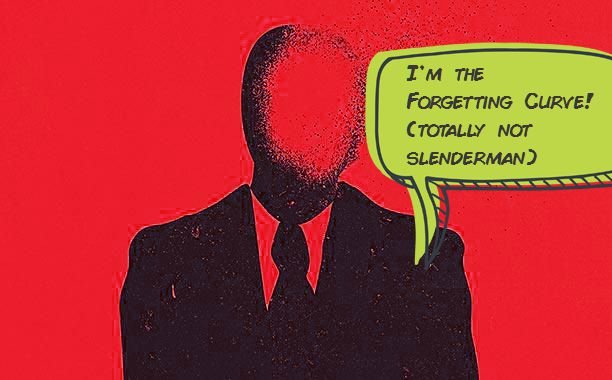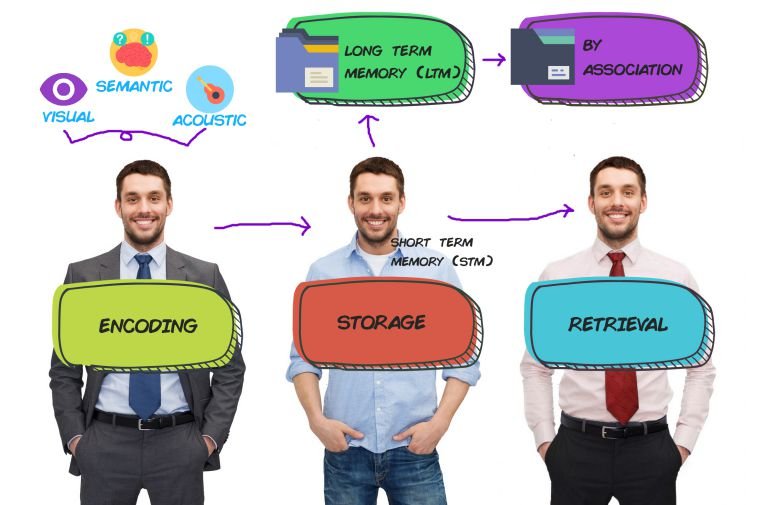How Can I Remember What I’ve Learned?

This is a totally mindf&cking question that has plagued me for ages. A lot of my students, and at times, colleagues ask me this unavoidable query. It is quite difficult to acquire new knowledge, but it is proven to be more challenging retaining it. This is actually a subject I have researched a couple of years ago which I shall share my findings with you now.
So what’s the trick? How does one not forget such evanescent ideas and not make their wise state something ephemeral? To be completely plain about it, in order to not forget what has been learnt, it has to be transferred from the working memory in to long term memory.

First, you need to understand the enemy. It’s called the Forgetting Curve.

It is an evil entity which is responsible for the loss of over 60% of everything we learn during a 9-hour gap between acquisition and pure recollection without any reinforcement of information.

In order for us to remember what we learn, we need to bypass the Forgetting Curve through a series of complex systems and tedious procedures – just kidding; we just need to use the Informed Learning Process which is pretty straightforward:

The process goes this way…
- Everything we register with our senses e.g. sight, sound, touch is acknowledged by the brain and recorded in our sensory memory.
- At this point, focus comes into play and sifts through the relevant information to acknowledge. Hence, if the stimulus is not acknowledged by our attention, it is safe to say that it’s futile to recall it later on.
- To instill the information, it has to be transferred from the sensory memory to working memory which has a limited capacity and can only accommodate the information for an inadequate amount of time.
- Finally, the information should be transferred from the working memory to the long term memory for maximum retention. Thus, the process comprises three stages and various interferences can happen at any stage.

So how do we exactly do that?
Basic (Sensory Memory to Working Memory)
- Attention must have focus. There are plenty of ways to improve focus by decluttering your environment, getting rid of distractions, and eliminating interruptions.
- Getting healthy. (Yes, this is a factor.) This includes eating right, getting enough sleep, managing breaks, and having a sound thinking process.
Advanced (Working Memory to Long Term Memory)
Information stored in our working memory lasts about 10 to 15 seconds. In order to transfer it to our long term memory, it needs to go through this process: encoding, storage, and retrieval.
- Improve the encoding process by understanding what you are reading or what knowledge you are acquiring, underlining key concepts, noting conclusions, and making summaries or comments.
- Take notes because handwriting is f&cking awesome for learning. It enforces thinking before writing and reinforces the relevant information. It also captures ideas in times when inspiration suddenly decides to show its mischievous elusive face.
- Improve the storage by creating connections with older knowledge. This includes tagging and stratifying information. With multiple tags, it is easier to find the information, and they also improve encoding.

- Practice retrieval activities. For instance, if it’s textbook information, we can solve problems, answer exam questions, and explain the material to others. If it’s information from a non-fiction text, we can refresh our memory at a 2-week and 2-month intervals. If it’s a system, it has to be done immediately. Finally, if it’s a phrase or a poem piece, it has to be used within 24 to 48 hours in conversation over and over for 1-2 weeks to achieve retention.
- Use spaced repetition.

One of the best ways to punch the forgetting curve in the face is through spaced repetition. As you can see above, the repetitions of the material learnt are scheduled at the points where the forgetting curve drops. The actual algorithm is probably still an effing secret, but it takes you through this sequence of reviews if you answer correctly. If you make a mistake or forget, you go back to the beginning of the whole process with the 1st reminder being run again within the following 24 hrs. Pretty neat, eh?
Hope this helps you in some way. Cheers.
 Previous Post
Previous Post Next Post
Next Post








